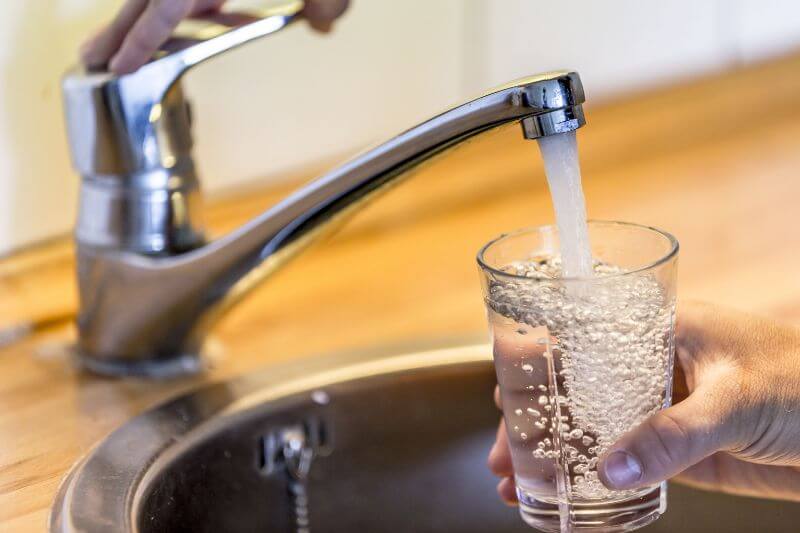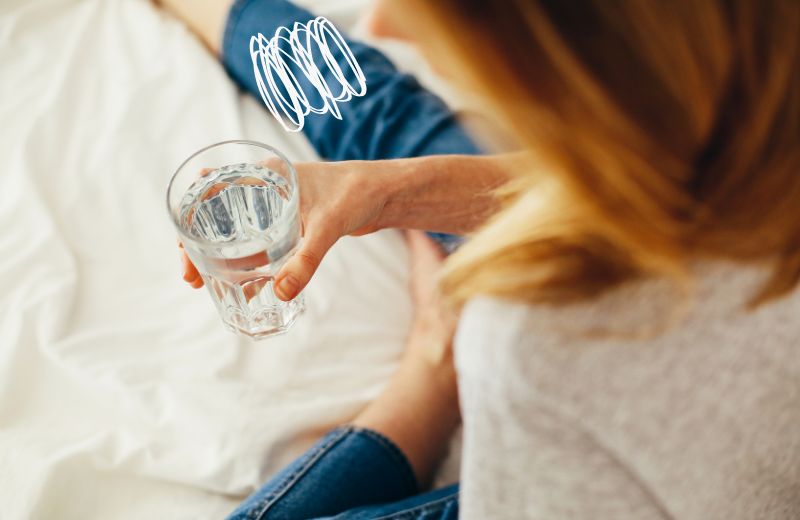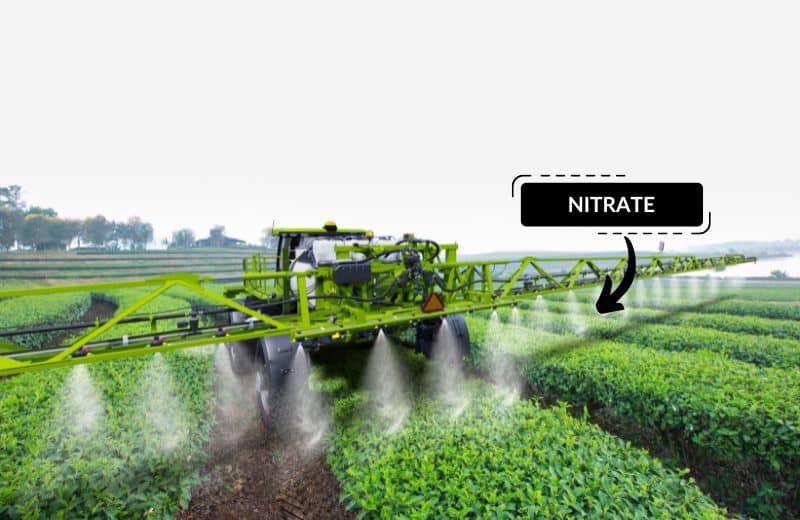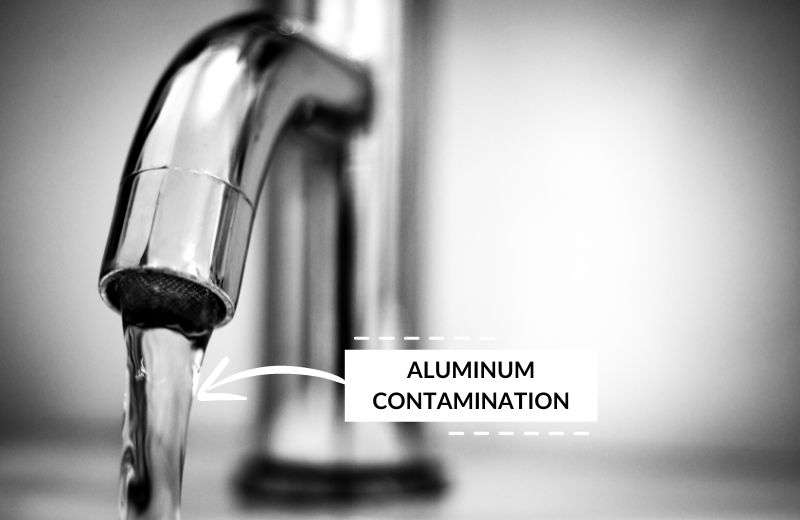Wondering whether you can safely drink LA tap water? When you compare the quality of the tap water in LA, how does it compare to the water in other cities and states? And does Los Angeles tap water contain any dangerous contaminants above state or national guidelines?
You’ll find the answers to these questions and more in this guide.
📌 Key Takeaways:
- LA tap water is considered generally safe to drink.
- Like all US water supplies, Los Angeles tap water is regulated by the Environmental Protection Agency (EPA).
- The five biggest problem contaminants in LA tap water are arsenic, bromate, chromium 6, radiological contaminants, and TTHMs (trihalomethanes) – but these are all present at acceptable levels according to the Safe Drinking Water Act.
Table of Contents
- 🚰 Can You Drink LA Tap Water?
- 🗺️ Where Does the Tap Water in LA Come From?
- 📉 Who Regulates LA Drinking Water?
- 🧪 Los Angeles Water Quality Report
- ☣️ Contaminants Found Above Guidelines in Tap Water in Los Angeles
- 🧫 Main Contaminants Found in LA Tap Water
- 🏢 LA Drinking Water in Public Places
- 💬 Frequently Asked Questions
🚰 Can You Drink LA Tap Water?
Yes, you can drink tap water in Los Angeles, since this water is regulated by the Environmental Protection Agency – as with all other municipal water supplies in the United States.
LA tap water is considered safe and clean and doesn’t violate any state or national standards for particular contaminants.
LA’s drinking water quality isn’t perfect, but the contaminants present in the water are all found at lower levels than the EPA’s Maximum Contaminant Levels (MCLs).
With that said, there are debates over the safety of even trace amounts of these contaminants in drinking water, and the Environmental Working Group has set its own Health Guidelines, of which 9 of the contaminants in LA’s tap water exceed.

As an independent organization, the Environmental Working Group doesn’t have any legal power over water utilities, and the EWG Health Guidelines are simply that: guidelines. But the EWG believes that, due to the potential dangers of certain drinking water contaminants, the MCLs set by the EPA aren’t stringent enough.
So, based on the EPA guidelines, tap water in LA is legally safe to drink. But the EWG believes that it isn’t. We’ll discuss the 9 contaminants affecting Los Angeles water quality later in this article.
It’s also worth noting that the EPA doesn’t regulate all contaminants that get into national tap water supplies, including the drinking water in LA. For instance, the EPA only regulates 90 chemicals, but there are thousands of chemicals used in various manufacturing processes, many of which run off into our surface water sources.
👨🔧 Check out our post to learn which states have the worst quality drinking water.

🗺️ Where Does the Tap Water in LA Come From?
Most of the drinking water imported into Los Angeles is from the Los Angeles Aqueduct system, which is located in Mono Basin and Owens Valley. Some of LA’s water is also pumped up and processed from groundwater supplies.
Due to the lack of open space and heavy paving in Los Angeles, there isn’t much opportunity for rainwater (the little that LA has) to seep into the ground and recharge the underground aquifers. That’s why a good portion of LA’s water is imported into the city.
LA has also recently started recycling its wastewater, which should help to reduce issues with the city’s dwindling natural water supplies.
📉 Who Regulates LA Drinking Water?
The City of Los Angeles tap water is managed by the Los Angeles Department of Water and Power and regulated by the Environmental Protection Agency.
Adhering to the EPA’s National Primary Drinking Water Regulations, the Los Angeles Department of Water and Power monitors more than 200 contaminants in the City’s drinking water supply every year. The organization samples and tests water at various citywide locations.
How is it determined which contaminants should be removed? The EPA’s guidelines were produced in accordance with the Safe Drinking Water Act (SDWA). The National Primary Drinking Water Regulations highlight 6 groups of contaminants that must be monitored and removed from water: microorganisms, disinfectants, disinfection byproducts, organic chemicals, inorganic chemicals, and radionuclides.
All water treatment facilities, including those in LA, must ensure that their public tap water supplies don’t exceed the maximum amounts of these contaminants. If they do, the EPA will enforce the facility to take action against this problem – and requires proof of cooperation.

🧪 Los Angeles Water Quality Report
The most recent Water Quality Report (or Consumer Confidence Report) available for online viewing for LA tap water is dated from January to December 2021.
The report isn’t one of the easiest Consumer Confidence Reports to read. Some cities clearly outline the contaminants of most concern in the water, or the contaminants that have been found at the highest levels, but the Los Angeles Water Quality Report simply lists contaminants on a very large table packed with abbreviations.
It appears that nitrate, TTHMs, chloride, iron, calcium, magnesium, uranium, and several other minerals were all detected in trace amounts in LA’s tap water. None of these appear to exceed the legal limit.
However, because trace amounts of these contaminants were detected, it means that LA’s water isn’t 100% pure and healthy.
The Water Quality Report also shares test results for lead in consumer taps, based on 23 sites tested. In no sites was lead detected above the Regulatory Action Level (AL) – but that doesn’t mean that trace levels of lead below the AL weren’t detected.
We suggest reading the Los Angeles 2021 Water Quality Report and deciding whether you want any further information (contact the City if so) or whether you’ve seen enough to know that you want to filter your water.
☣️ Contaminants Found Above Guidelines in Tap Water in Los Angeles
According to the Los Angeles Water Quality Report, no contaminants were detected above the legal limit according to EPA guidelines.
So, for this section, we’ll look at the EWG’s tougher guidelines (which, remember, are not legally enforceable), and which contaminants in LA tap water exceed these particular guidelines.
There are 9 contaminants that exceed the EWG’s Health Guidelines from January 2021-March 2021 (the latest data provided):
Arsenic
The EWG’s recommended Health Guideline for arsenic, a highly toxic carcinogenic contaminant, is 0.004 PPB (parts per billion). 1.72 PPB of arsenic was detected in LA’s tap water – that’s 430x the recommended Health Guideline. Note, however, that the EPA’s official legal limit for arsenic is 10 PPB.

Bromate
0.735 PPB of bromate, a carcinogenic disinfection byproduct formed by ozone disinfection, was detected in LA water – 7.3x the EWG’s recommended Health Guideline of 0.1 PPB. Again, the EPA’s official legal limit for bromate is 10 PPB.
Hexavalent Chromium
The EWG has set a Health Guideline of 0.02 PPB of hexavalent chromium (or chromium-6), the dangerous, carcinogenic form of chromium that’s often found in water due to industrial pollution and is difficult to remove with standard filtration methods. 0.586 PPB of hexavalent chromium – 29x the EWG’s Health Guideline – was detected in LA water. There is no EPA legal limit for this contaminant.
Haloacetic acids (HAA5)† and Haloacetic acids (HAA9)†
HAA5 and HAA9 are two haloacetic acids produced as chlorination disinfection byproducts. 10.3 PPB – 11.0 PPB of these contaminants were found in LA’s tap water – 103-184x the EWG’s Health Guidelines of 0.1 PPB and 0.06 PPB. The EPA has a legal limit of 60 PPB for HAA5, and no legal limit for HAA9.
Nitrate and Nitrite
Nitrate and nitrite are forms of nitrogen that have serious health effects when consumed in excess. 1.07 PPM of these contaminants were detected in LA’s water system 7.6x the EWG’s recommended Health Guideline of 0.14 PPM. The legal limit set by the federal government for these contaminants is 10 PPM.

Total trihalomethanes (TTHMs)†
Total trihalomethanes, or TTHMs, are another disinfection byproduct with potential health effects including cancer. 26.6 PPB of TTHMs were detected in LA’s water, which doesn’t exceed the federal legal limit of 80 PPB – but DOES go 177x over the EWG’s recommended Health Guidelines of 0.15 PPB.
Uranium
3.00 pCi/L (picoCurie per liter) of uranium, a radioactive heavy metal with carcinogenic effects and other health risks, was detected in LA’s water. The legal limits for uranium contaminant levels are 20 pCi/L. However, the EWG Health Guideline for uranium is 0.43 pCi/L – and LA’s water contains 7x this amount.
🧫 Main Contaminants Found in LA Tap Water
Again, the most helpful resource we found for listing the main contaminants in Los Angeles tap water is the EWG Tap Water Database for the City.
The EWG detected 30 contaminants present in LA tap water, including:
- Aluminum – A heavy metal that may irritate the gastrointestinal tract in large amounts.
- Barium – Another heavy metal commonly found in groundwater due to its presence in certain types of sedimentary and igneous rocks. Ingesting large amounts of barium in water may lead to vomiting, blood pressure fluctuations, difficulty breathing, and muscle weakness.
- Total chromium – Refers to all chromium compounds in a water supply, including harmless chromium-3 and dangerous chromium-6. High levels of chromium-6 in water may cause liver and kidney damage, various cancers, and eye irritation.
- Disinfection byproducts – Such as bromide, bromodichloromethane, chlorate, 1,1-dichloroethane, dichloroacetic acid, and trihalomethanes, which have several known health effects, including fertility problems and cancer.
- Fluoride – LA’s water supply is fluoridated. Fluoride is a mineral with dental health benefits, but its use in drinking water is controversial. In excess, fluoride may cause dental fluorosis (staining of the teeth) and skeletal fluorosis (a metabolic bone disease).
- Nitrite – A form of nitrogen and another contaminant found in groundwater supplies in areas with agricultural and urban runoff or municipal wastewater treatment plants. Large amounts of nitrites in drinking water can cause methemoglobinemia, a condition that affects the blood’s ability to carry oxygen.
- Selenium – A trace mineral needed in small amounts by the human body. Selenium usually gets into water through natural deposits, mining activity, and agricultural runoff, and may cause skin discoloration, hair loss, and tooth decay if consumed in excess.

🏢 LA Drinking Water in Public Places
We know about LA’s local tap water quality, but what can you expect from the water in public places, like restaurants, hotels, and bars?
You can get free tap water from pretty much every restaurant in the City, and it’s the same water that’s delivered to homes in residential areas. Restaurants aren’t legally required to serve free tap water to customers, and California is under water restrictions due to the drought risk.
You should also get a good supply of drinking water in hotel rooms, and hotels should let you know if water isn’t safe to drink. In this case, you should still be able to get drinkable water at the hotel bar.
You’ll struggle to find drinking water fountains in LA, which means you’ll probably end up drinking bottled water while you’re out and about. Popular bottled water brands sold in most grocery stores in the City are Aquafina, Dasani, Fiji Water, and Smartwater.
💬 Frequently Asked Questions
Is Los Angeles water hard or soft?
Yes, the water in Los Angeles is either hard or very hard. The water hardness in LA is around 127 PPM or 7 GPG, which is slightly lower than the state’s average water hardness. Because LA has hard water, residents will likely notice the effects of calcium and magnesium hardness minerals in their water systems, including limescale buildup, soap scum, and dry skin and hair.
Is it safe to drink Los Angeles tap water?
Yes, according to the most recent LA Water Quality Report, Los Angeles water is safe to drink and doesn’t have any violations for various contaminants regulated by the EPA. However, many people in LA choose to filter their water with a water treatment system at home (such as a reverse osmosis system) to remove trace levels of regulated and unregulated contaminants present, such as arsenic, disinfection byproducts, and nitrite.
Does LA tap water have lead?
According to the Consumer Confidence Report for LA in 2021, lead levels in tap water provided by the City were lower than the legal Regulatory Action Level across 23 testing locations. However, this doesn’t mean that no lead is present in LA water supplies at all. We recommend testing your water for this toxic heavy metal if you’re concerned.
Does LA tap water have chlorine?
Yes, many water supplies in LA are disinfected with chlorine or chloramine (a combination of chlorine or ammonia), so a good portion of LA’s water contains this chemical. However, some of LA’s water is now disinfected with UV treatment, eliminating the need for chlorination. Many water filters are capable of removing chlorine from a water supply, including activated carbon filter systems.
Can you drink sink water in Los Angeles?
Yes, you can drink sink water in Los Angeles. However, it’s best to drink only from kitchen sinks and hotel sinks when you know that the water is safe. Other sinks, like bathroom sinks, may use fixtures made from harmful metals that leach into your tap water, so they’re not necessarily safe.
